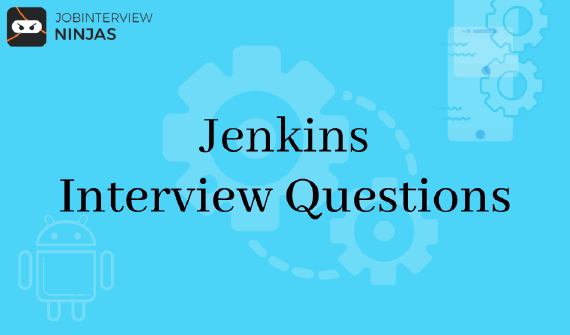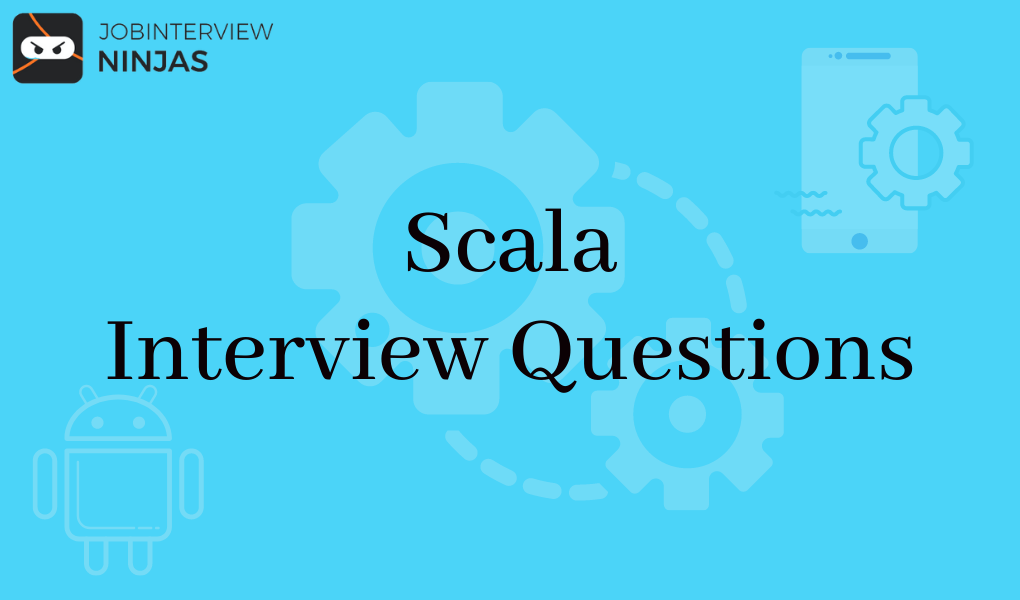
Top 40 Jenkins Interview Questions And Answers For Freshers/Experienced
If you are looking for a career in software development, then Jenkins is definitely worth exploring. This widely used …

On this page, we have provided you with a list of frequently asked technical interview questions on Scala. This programming language is highly used and in demand by big corporations so be up-to-date here you’ll get Scala Interview Questions. From this page, you can prepare the given Scala Interview Questions and Answers and crack the interview rounds. This technical language is required at all levels and that is why you’ll get the combination of beginner, advanced and experienced interview questions on Scala.
About Scala: Scala can be used for both functional and Object-oriented programming. It is a programming language that executes on the Java Virtual Machine (JVM). Its vast array of libraries makes Scala the most adopted language for developing websites. With the help of Scala, Spark developers can write better and more performant programs by using powerful features like tuples, macros, and functions.
4. Tell me some advantages of Scala?
5. State the reasons why Scala is better than other programming languages?
7. Differentiate between an object and a class?
8. Explain recursion tail in scala?
9. Explain ‘scala trait’ in scala?
12. Tell me the use of tuples in Scala?
13. Explain function currying in Scala?
14. Explain implicit parameters in Scala?
15. Explain a closure in Scala?
17. Explain Scala anonymous function?
18. Explain Scala higher-order functions?
19. Differentiate between var and value?
20. Explain option, some and none in scala?
21. Tell me how do I append to the list?
22. Tell the way to format a string?
23. Why does scala choose immutability?
24. Name the four types of Scala identifiers?
25. Name the different types of Scala literals?
26. Scala is a Functional and Object-oriented Programming Language. Explain?
27. Name a few Frameworks of Scala?
28. What do you understand about Streams in Scala?
29. Name some Operators in Scala.
30. Why do we require an App in Scala?
31. Differentiate between Nil, Null, None, and Nothing.
33. Define implicit classes with syntax
34. Explain three default Packages in Scala?
35. Make a syntax to define a function in Scala?
36. Tell us how you can compile a Scala code?
37. Describe the functionality of Yield.
40. Create a Syntax for function declaration in Scala?
41. Tell the way to Concatenate two Strings?
42. Describe any five-string methods.
43. Define Extractors in Scala
44. Tell the result of x+y*z and why?
45. Explain an Auxiliary constructor
46. Create a program to show recursion
48. Name the types of literal:
4. Tell me some advantages of Scala?
5. State the reasons why Scala is better than other programming languages?
Scala has two conditions that are values and variables. A value variable is regular and cannot be altered once assigned. A constant variable is immutable on the other hand, is mutable, and you can modify the value.
The types of variables are
var myVar : Int=0;
val myVal: Int=1;
7. Differentiate between an object and a class?
8. Explain recursion tail in scala?
9. Explain ‘scala trait’ in scala?
12. Tell me the use of tuples in Scala?
13. Explain function currying in Scala?
14. Explain implicit parameters in Scala?
15. Explain a closure in Scala?
17. Explain Scala anonymous function?
18. Explain Scala higher-order functions?
These are functions that carry different functions as parameters, or whose outcome is a function. For example: apply () function takes another function ‘f’ and a value ‘v’ and uses a function to v.
Example:
object Test {
def main(args: Array[String]) {
println( apply( layout, 10) )
}
def apply(f: Int => String, v: Int) = f(v)
def layout[A](x: A) = "[" + x.toString() + "]"
When the above code is compiled and performed, it produces the following result.
C:/>scalac Test.scala
C:/>scala Test
[10]
C:/>19. Differentiate between var and value?
20. Explain option, some and none in scala?
21. Tell me how do I append to the list?
In scala to append into a list, use “:+” single value
var myList = List.empty[String]
myList :+= "a"
myList :+= "b"
myList :+= "c"
use++ for appending a list
var myList = List.empty[String]
myList ++= List("a", "b", "c")22. Tell the way to format a string?
Use the .format () method to format a string in scala, you can use
Val formatted= “%s %i”.format (mystring.myInt)
23. Why does scala choose immutability?
24. Name the four types of Scala identifiers?
25. Name the different types of Scala literals?
26. Scala is a Functional and Object-oriented Programming Language. Explain?
27. Name a few Frameworks of Scala?
28. What do you understand about Streams in Scala?
29. Name some Operators in Scala.
30. Why do we require an App in Scala?
The app is a helper class that contains the primary method and its members concurrent. The App trait can be utilized to instantly turn objects into working programs. We can extend App classes to affect the executable code.
object Jobinterviewninjas extends App{ println(“Hello World”) }
31. Differentiate between Nil, Null, None, and Nothing.
You can extend a base Scala class plan to an Inherited class in the similar way it is done in Java by using extends keyword, but there are two limitations: method Overriding needs the override keyword, and only the main constructor can allow parameters to the base Constructor. For example:
println("How to extend abstract class Parent and define a sub-class of Parent called Child")
class Child=(name:String)extends Parent(name){
override def printName:Unit= println(name)
}
object Child {
def apply(name:String):Parent={
new Child(name)
}
}33. Define implicit classes with syntax
Implicit classes permit implicit conversations with the class’s main constructor when the class is in scope. An implicit class is a class labeled with the “implicit” keyword. This characteristic was introduced in Scala 2.10 version.
//Syntax:
object {
implicit class Data type) {
def Unit = xyz
}
}34. Explain three default Packages in Scala?
35. Make a syntax to define a function in Scala?
To define the Function in Scala use def keyword. for Example
object add {
def addInt( a:Int, b:Int ) : Int = {
var sum:Int = 0
sum = a + b
return sum
}
} 36. Tell us how you can compile a Scala code?
37. Describe the functionality of Yield.
Yield is used with a loop; it creates a value for each iteration. Another way to yield is to utilize map/ flatMap and filter with nomads.
for (i <- 1 to 5) yield i
If a condition never returns false then a loop becomes an Infinite loop. If Scala the while loop is found the best to execute an infinite loop.
The following program executes an infinite loop.
object Demo {
def main(args: Array[String]) {
var a = 10;
//An infinite loop.
while( true ){
println( "Value of a: " + a );
}
}
}
40. Create a Syntax for function declaration in Scala?
The Syntax for function declaration is as follows:
def functionName ([list of parameters]) : [return type] = {
function body
return [expression]
}41. Tell the way to Concatenate two Strings?
To perform string concatenation in Scala you can use any three methods:
string1.concat(string2);
“My name is “.concat(“Zara”);
“Hello,” + " world” + “!”
42. Describe any five-string methods.
43. Define Extractors in Scala
44. Tell the result of x+y*z and why?
45. Explain an Auxiliary constructor
46. Create a program to show recursion
48. Name the types of literal:

If you are looking for a career in software development, then Jenkins is definitely worth exploring. This widely used …

In this post, we will cover a few Linux interview questions and their answers. So, let’s get started. In this …